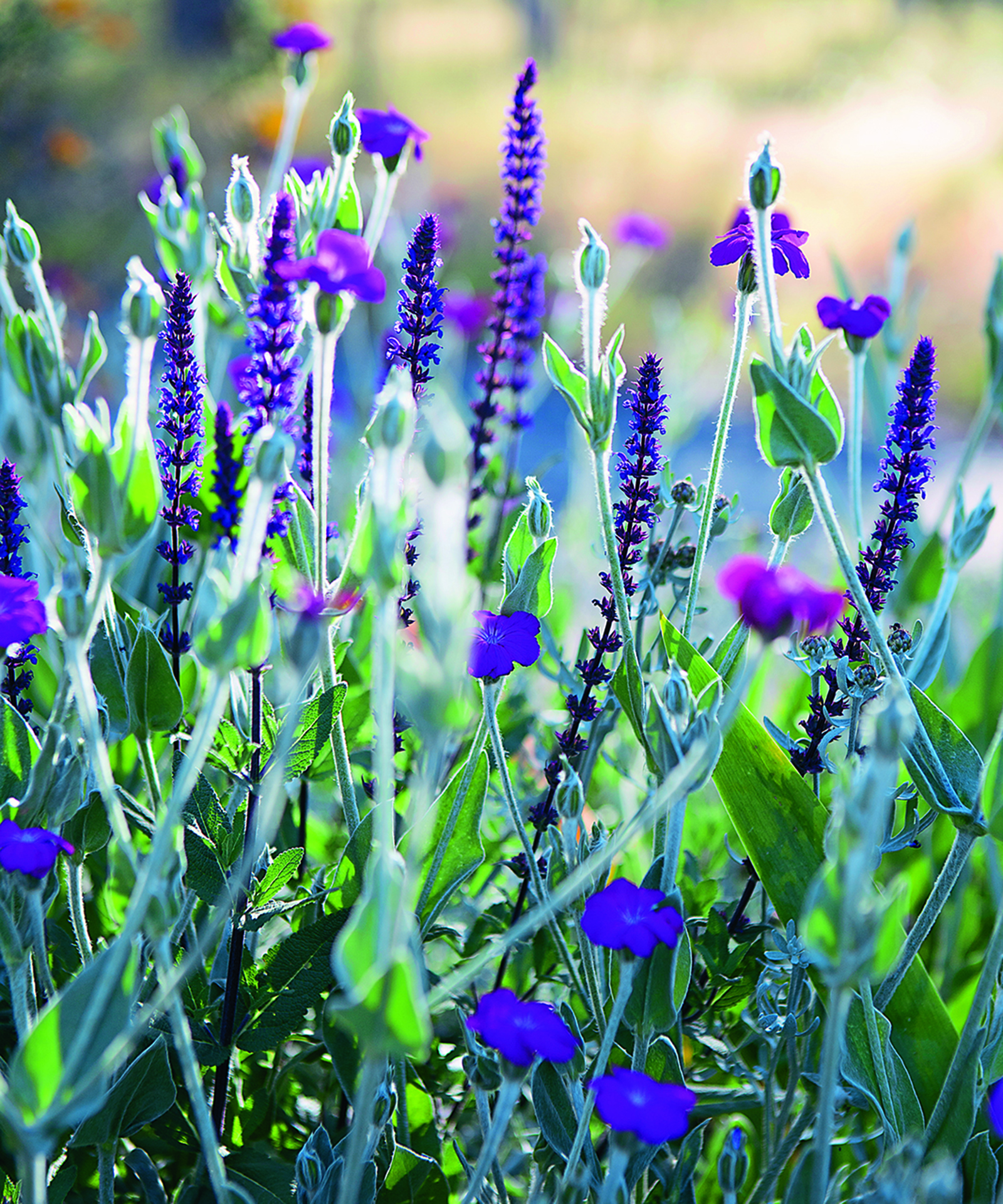Want a gorgeous big flower that blooms in sun or light shade, doesn’t need watering, pruning, weeding or feeding, and will refuse to die even if a semi-trailer backs over it? Then you need some agapanthus.
Agapanthus are among the most generous bloomers about but… (there are always ‘buts’ in the gardening world!):
‘But’ number 1:
Some older varieties of agapanthus – big, strong darlings – are so big and vigorous they can become a weed, colonising the bush and roadsides. Don’t plant the ‘big oldies’ if you live anywhere near the bush! And just to be safe, always break off the flower stems on any aggie when the flowers have faded. That keeps the plants looking neater, too – but it also ensures that your aggies will never go wild.
‘But’ number 2:
Most people think all aggies need the same conditions. There are hundreds of different varieties of agapanthus. Some bloom in deep, dry shade, others need full sun to bloom well. Most will bloom in either full sun or light shade, give you some flowers even in the worst droughts and lots of blooms in good rainy years.
But if your aggies aren’t giving you a glorious display of big shaggy blooms, then they may well be in the wrong place. And there is one place that ALL aggies hate – anywhere they’ll have wet feet. Aggies MUST have well drained soil, or their roots will rot. But apart from that they are very tolerant. They’ll even thrive on slightly salty bore water or with strong salty coastal winds.
Which Agapanthus?
Aggies come in a lovely range of blue to purple shades, from an almost inky black to a misty sky blue. There are also pure white aggies, aggies with a pink or blue tinge, and a rare pale pink aggie too. They range in height from blooms on one metre high stems to those on stems of a mere 30cm.
Most aggies flower in mid-summer for about six weeks with spectacular giant blooms. But many of the newer varieties will flower from the end of November right through to late summer and autumn. There are winter blooming agapanthus, too, though in very cold climates they may sulk and refuse to flower till early spring.
Just about all aggies are evergreen, but there are some deciduous ones – their leaves die back in winter and then burst forth again in spring.
A few favourites:
Black Pantha: Tall and dark, dark purple, and if the breeders are correct then this variety won’t set seed so it can’t become a weed.
Agapanthus pendulus: Deep blue drooping flowers, tall and sun loving.
Agapanthus Snowball: Just as the name says – a wonderful ball of white on a small ‘dwarf’ plant.
Agapanthus Sea Mist: Small plants with flowers of a light misty blue.
Agapanthus Snowflake: A neat small plant with silvery green leaves and masses of white flowers carried through most of summer.
Agapanthus dwarf white: Only 20-30cm high.
Agapanthus Alba Rosea: Small plant, White flowers with pink tips.
Agapanthus Streamline: Low-growing, dwarf agapanthus with pale blue flowers that have a deeper blue strip down centre.
Agapanthus Double Delight: Deep purple flowers, likes morning sun and afternoon shade
Agapanthus Strawberry Ice: Spectacular aggies, about 80cm high, with white flowers blushed with pink.
Agapanthus Peter Pan: About 60cm high, pale sky blue flowers in mid-summer.
Agapanthus orientalis: The common variety that can easily become a weed. They come in shades of blue and white, and grow about 150cm tall.
Agapanthus Tiger Stripe or Gold variegated: This rare aggie has yellow striped leaves, though you do need full sunlight for the colour to be really distinct. The flowers are pale blue and grow between 1.2-1.5m.
How to cosset an aggie:
Aggies are almost indestructible – but they do need to become well established first.
1.Plant in a good deep hole – don’t crowd the roots.
2. Give them half a bucket of water. A bit of mulch isn’t a bad idea, either.
3. Water about once a month for the first year.
4. Now ignore them – except when you’re admiring them and clipping off the dead heads, of course.
After a few years your single aggie plant will have grown into a giant clump, and the ones in the middle may not be flowering. Use a spade to ‘divide’ the clump. Plant your new aggies in another part of the garden, or give them away to friends who need some hardy colour in their lives and gardens!
Where to buy your agapanthus:
Most nurseries will have some varieties of aggies for sale. But if you become an agapanthus devotee – and in hot dry times it’s easy to do – then you’ll have to start hunting out specialist nurseries. Try Googling agapanthus and see what you get!
Where to grow your aggies:
Line the drive with a hedge of aggies, or plant them along the front fence.
Use a thick line of tall aggies as a backdrop in your flower garden, or as an edging of small ones in front;
Aggies look spectacularly elegant in pots on patios;
Cover hot dry areas with a mass of smaller, long-flowering aggies for a stunning summer display; and
Plant tall aggies around our deciduous trees. They get just enough sun to flower well. But more importantly, they protect the base of the trees from a husband who can get just a bit too enthusiastic with a whipper snipper or mower and damage the tree’s bark!
Oh, and aggies make superb cut flowers too – big, bold and beautiful, as well as long lasting.
Have fun!


